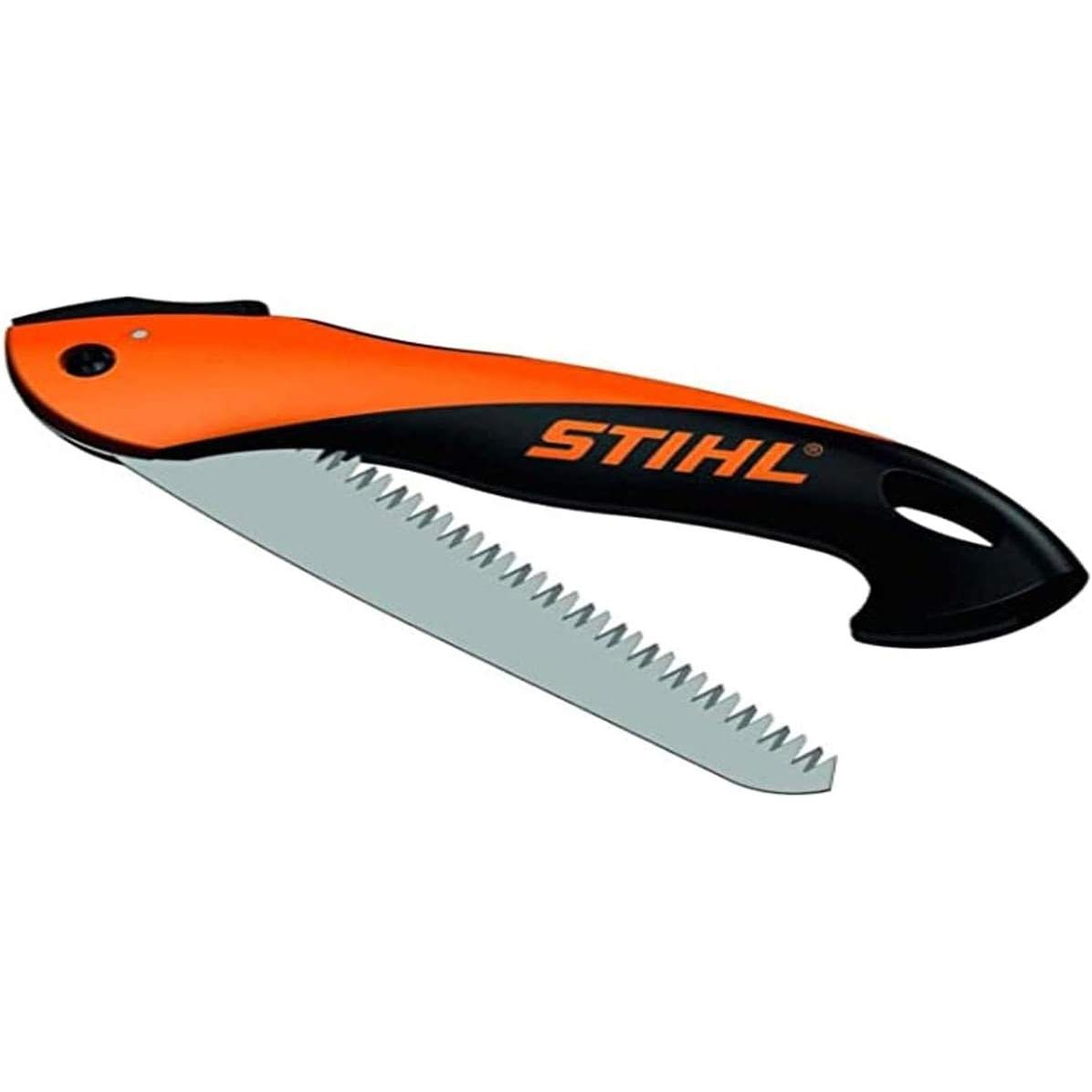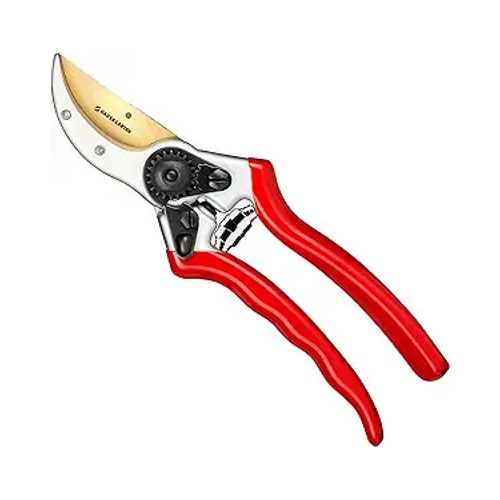When to prune a magnolia tree – for abundant blooms
Discover what time of year should you prune a magnolia tree, with expert tips to help you get the timing spot on
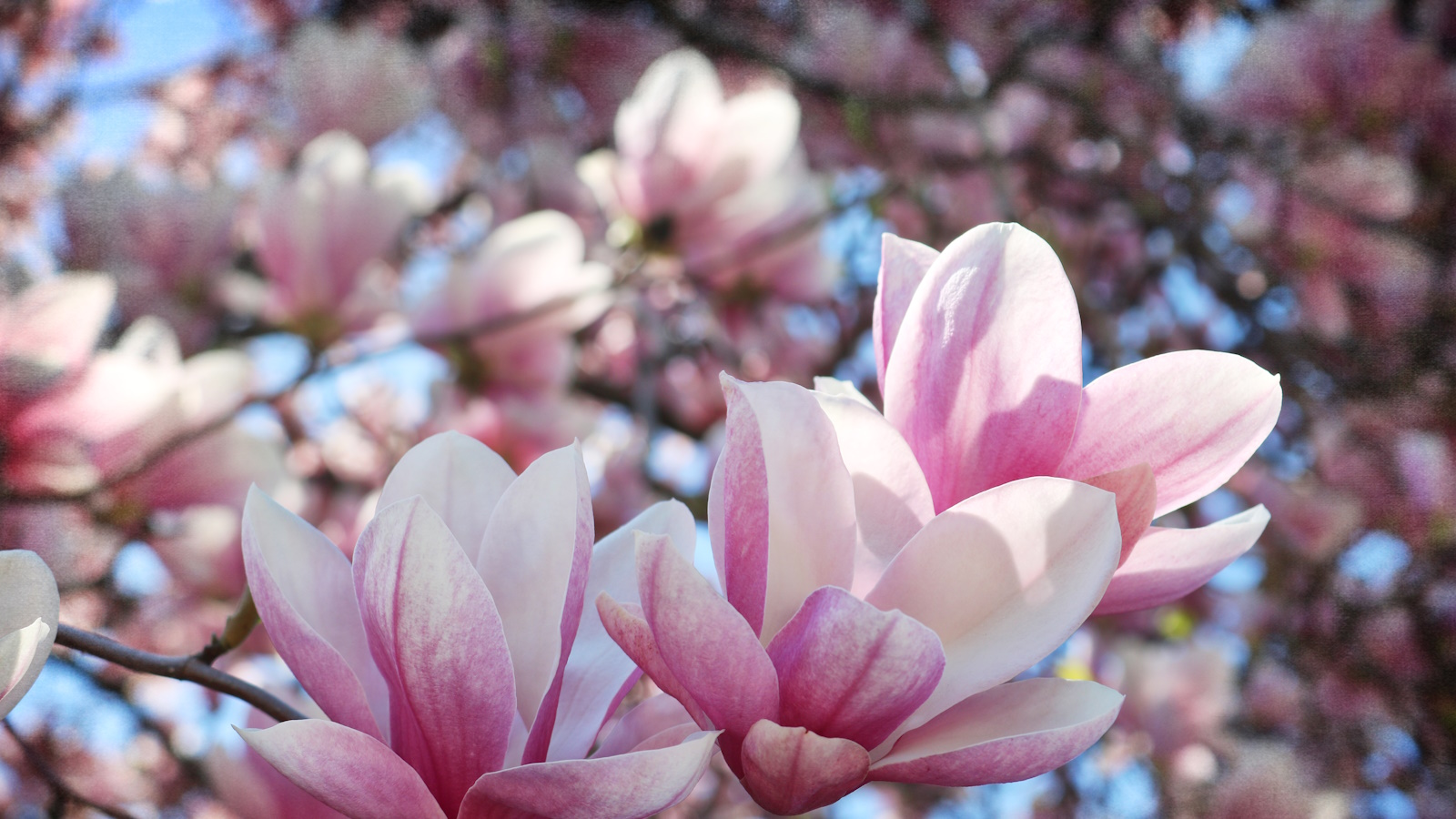

Magnolia trees are renowned for their large and stunning flowers that appear every spring or early summer. The trees do not require lots of regular pruning, though it is important to understand when to prune correctly, as well as how to, in order to keep them healthy and blooming.
Growing and caring for a magnolia tree, whether it is an evergreen or deciduous variety, is relatively easy. There may come a time when you do need to prune, however, and magnolia trees are delicate and can get easily stressed if they are trimmed at the wrong time.
Getting the timing wrong for when to prune a magnolia tree brings with it several risks. It can result in buds being removed and a loss of blooms, or the tree being left more susceptible to pests and diseases. Pruning at the right time means the tree will bloom prolifically and with no compromise to its health.
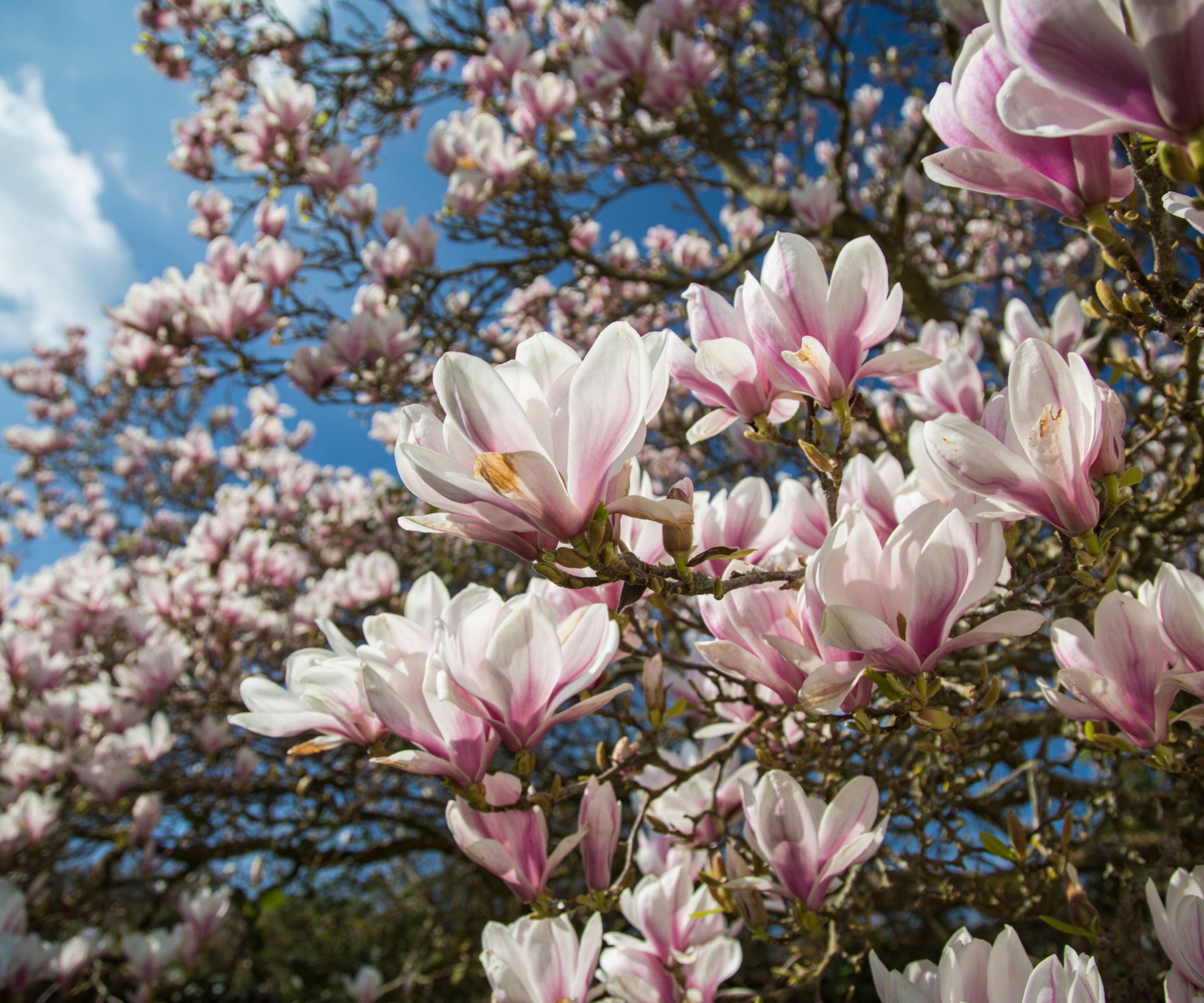
Magnolia trees are easy-to-maintain trees that often require little pruning
When is the best time to prune a magnolia tree?
There are different timing windows for pruning deciduous and evergreen magnolias trees. To help you discover when you should prune a magnolia tree, and avoid making a pruning mistake that could potentially impact the health and flowering of your tree, we hear from experts about the best time to trim a magnolia.
When to trim a magnolia tree
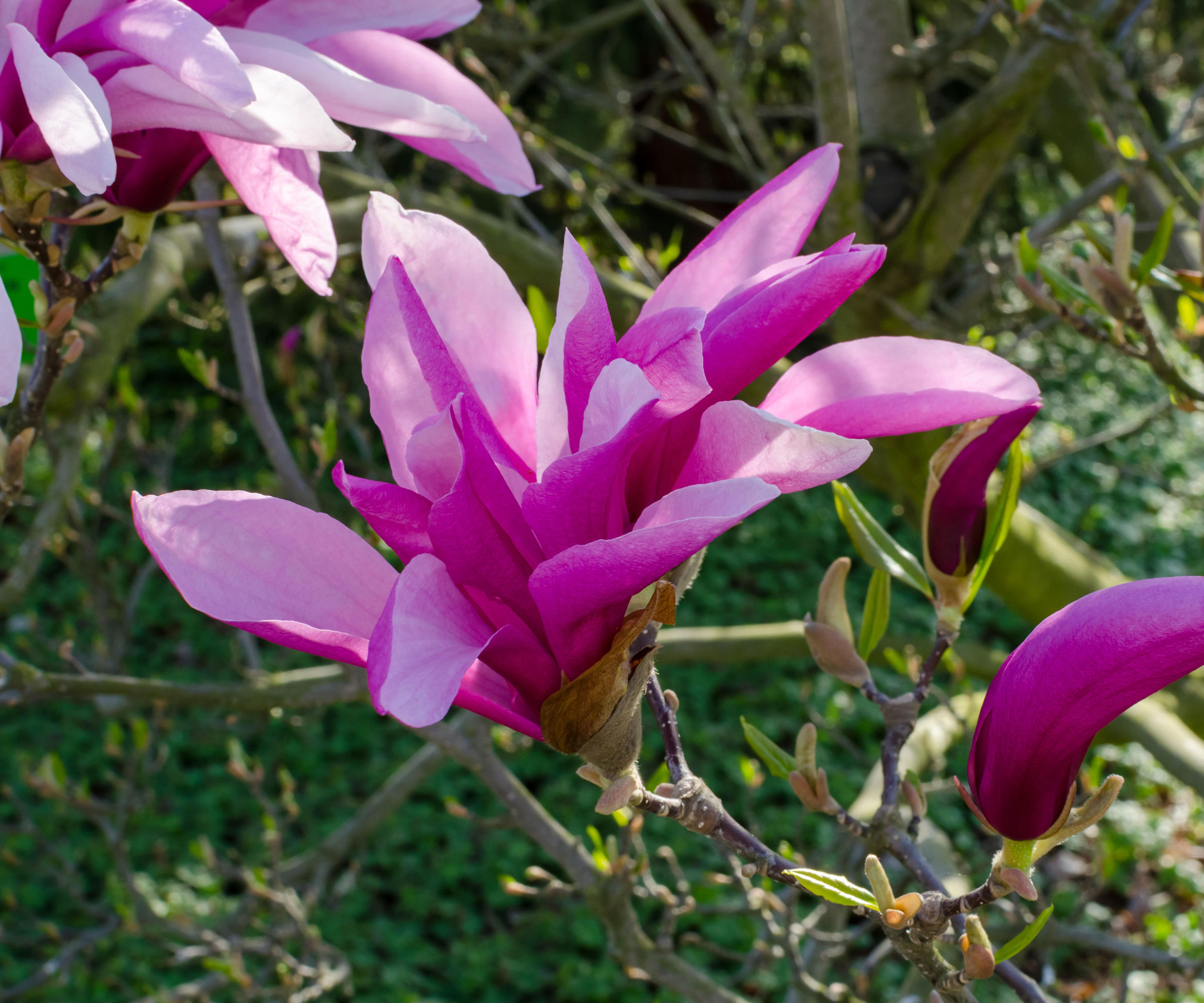
Prune a magnolia tree after it has flowered
Magnolia trees do not often need much pruning once they are established. Most can go many years without the need for trimming, but often pruning can be required to deal with damage from storms or to gently shape the tree.
The danger with pruning is that magnolias are sensitive trees and can be slow to heal any cuts, so it is important to understand when and how to prune magnolias properly. Any trimming needs to be considered and done only when absolutely necessary. Major pruning is only best limited to young trees.
So, if you identify that a magnolia in your backyard does require a bit of attention, what time of year should you prune a magnolia tree?
Amy Enfield, senior horticulturist at ScottsMiracle-Gro, explains how the fact that magnolias bloom on old wood, the growth produced the previous growing season, dictates when the best time to trim a magnolia is.
'The best time to prune them is after they bloom,' says Amy. 'This would mean late spring/early summer for deciduous types, like saucer and star, and closer to mid-summer for evergreen types like the Southern magnolia.
'Pruning after flowering allows the magnolia tree enough time to recover and heal any pruning wounds before winter. It also helps ensure that you won't unintentionally remove next year's flower buds, preserving the tree's aesthetic appeal and bloom potential.'
Pruning a magnolia in summer minimizes any stress on the tree. The flow of sap slows down at this time of year post-flowering and it means that pruning cuts will not bleed sap like it would do if you trimmed in late winter or early spring - which is when you prune many trees - and can leave the magnolia susceptible to pests and diseases as a result.
Trimming at other times of year can pose a number of potential risks, including removing the buds that will form next year’s flowers or leaving the tree at risk of cold and frost damage.
Tony O’Neill, experienced gardener and author at Simplify Gardening, admits ‘there are exceptions’ to the rule of only trimming after the trees have finished flowering - though these deviations will only involve very minor trimming.
‘If a tree is damaged or diseased, immediate pruning might be necessary to remove the affected parts and prevent the spread of disease, regardless of the season,’ he says. ‘Light trimming to shape the tree or remove deadwood can also be done outside the ideal window, but it's essential to limit this to a minimum to avoid stressing the tree.’
Prune a magnolia with caution and only prune lightly. Carefully consider when and how to prune branches out of the tree and always show restraint, as it is not recommended to remove more than 10 per cent of the tree’s crown.

Amy Enfield has over 25 years of experience in the Lawn & Garden industry and has been with ScottsMiracle-Gro for 11 years. She has a BS and MS in Horticulture from Michigan State University and a PhD in Plant & Environmental Sciences from Clemson University.

Tony O'Neill is an accomplished gardening expert, author, and educator. With a passion for simplifying gardening practices, he has inspired a wide audience through his popular YouTube channel and website SimplifyGardening.com. Tony's expertise empowers individuals to cultivate thriving gardens and connect with nature.
Tools for pruning a magnolia tree
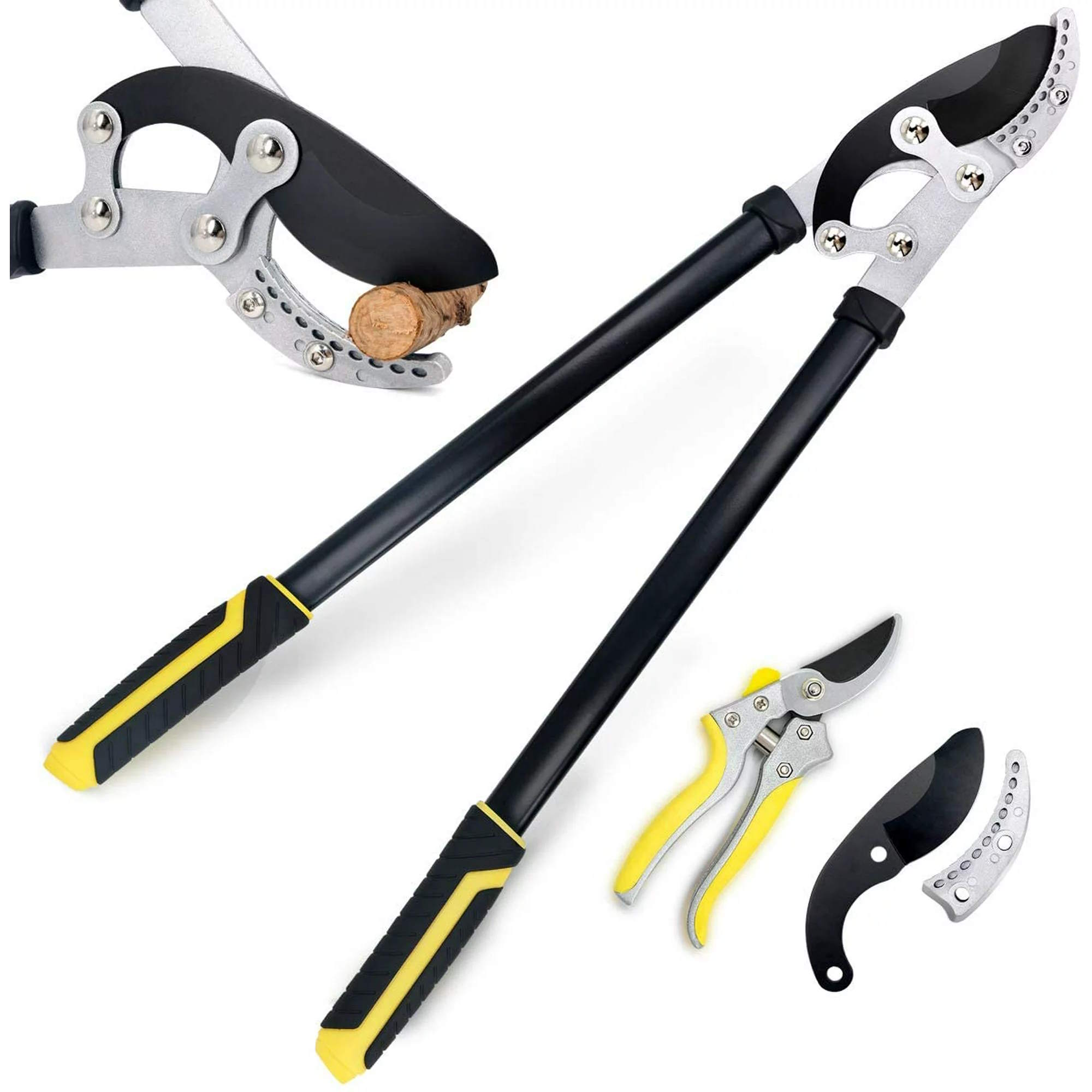
A set of heavy duty anvil loppers, durable pruning shears, and a spare lopper blade, ideal for a range of pruning tasks
FAQs
When is it too late to prune a magnolia tree?
Once fall comes around, it is considered too late to prune a magnolia. It would risk removing buds that would carry next year’s flowers, as well as the health of the tree. Amy Enfield, senior horticulturist at ScottsMiracle-Gro, warns: ‘Pruning too late in the growing season can leave the tree vulnerable to diseases and pest infestations, as the pruning wound may not heal as quickly or effectively during colder months.’
Can I prune a magnolia tree in winter?
It is not recommended to prune magnolias in the winter. Going and cutting at this time of year would be a tree pruning mistake that can risk the overall health of the tree. Pruning in late winter causes the tree to bleed sap from the pruning cuts. This attracts pests that can potentially be harbouring diseases, and leaves the tree increasingly susceptible to diseases. Pruning in winter also risks you cutting off the year’s flowering buds and can leave you with less blooms to enjoy.
Should I prune a magnolia at the time of planting?
It is beneficial to give a new magnolia a prune when you plant the tree. Young magnolias respond much better to trimming than when they are older. When planting, trim to help to create a desired shape and remove any weak branches or small branches, as well as cutting branches going in unwanted directions.
Whether you have a large magnolia tree or a more compact version, remember to not prune regularly as it will stress the tree. That is why it is always better to choose a compact variety of magnolia if you want to grow the tree in a small garden, rather than trying to restrict the growth of a larger-growing magnolia.
Sign up to the Homes & Gardens newsletter
Design expertise in your inbox – from inspiring decorating ideas and beautiful celebrity homes to practical gardening advice and shopping round-ups.

Drew’s passion for gardening started with growing vegetables and salad in raised beds in a small urban terrace garden. He has worked as a professional gardener in historic gardens and specialises in growing vegetables, fruit, herbs, and cut flowers as a kitchen gardener. That passion for growing extends to being an allotmenteer, garden blogger, and producing how-to gardening guides for websites. Drew was shortlisted for the New Talent of the Year award at the 2023 Garden Media Guild Awards.
-
 Everyone is obsessed with vintage tiles right now – bring the nostalgic charm of this classic design feature into your home with our 5 design ideas
Everyone is obsessed with vintage tiles right now – bring the nostalgic charm of this classic design feature into your home with our 5 design ideasHonor the past with our favorite ways to decorate with vintage tiles, as suggested by interior design experts
By Eleanor Richardson Published
-
 'It's a fast reset button' – using the 1, 2 ,3 ,4, 5 decluttering method cleared my persistent mess in seconds
'It's a fast reset button' – using the 1, 2 ,3 ,4, 5 decluttering method cleared my persistent mess in secondsIt's easy, effective and so quick to do
By Ottilie Blackhall Published
